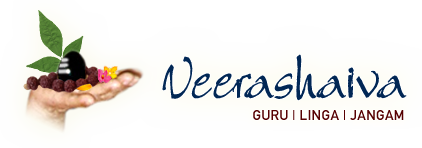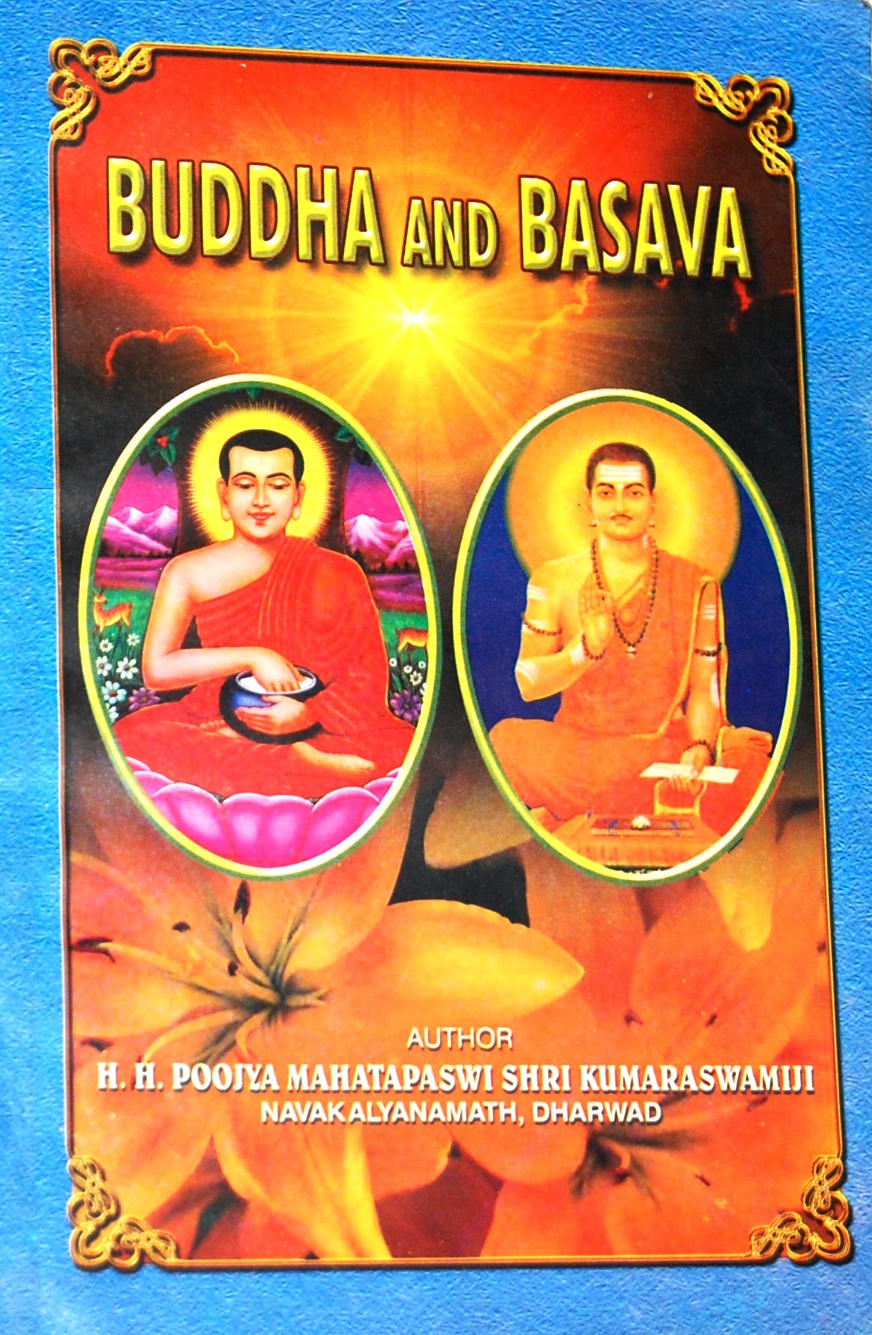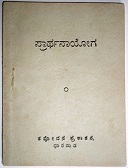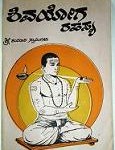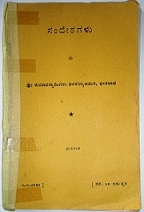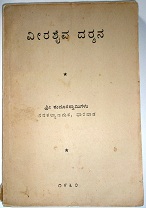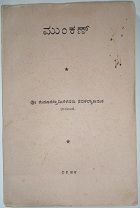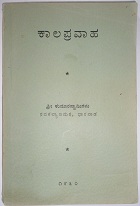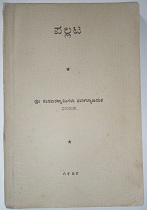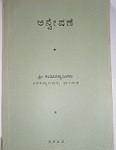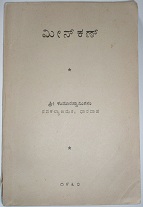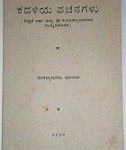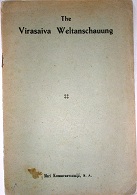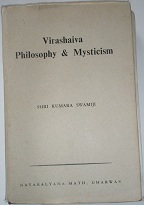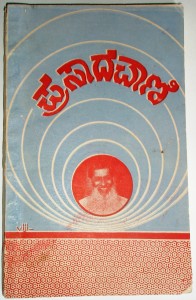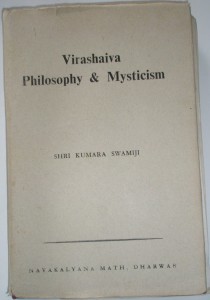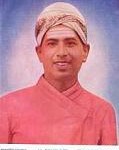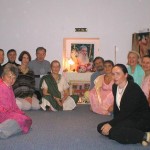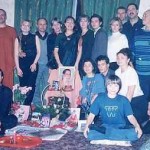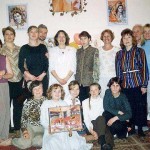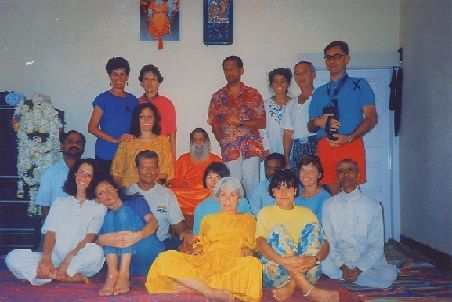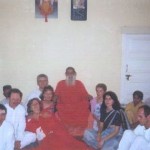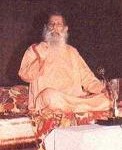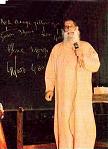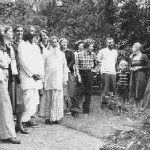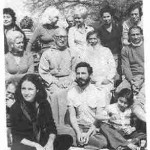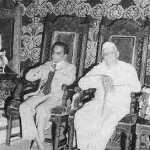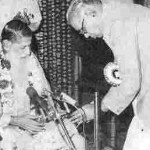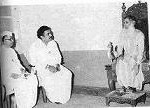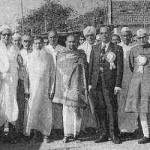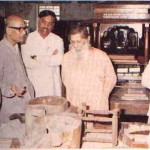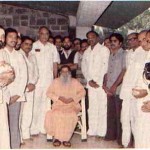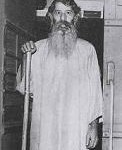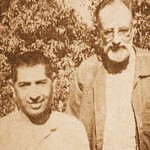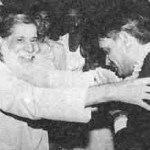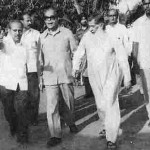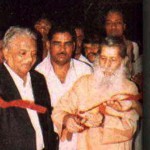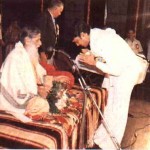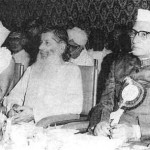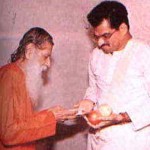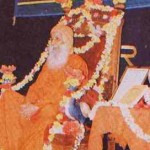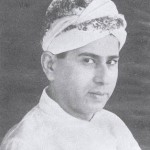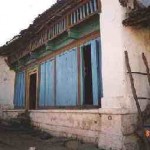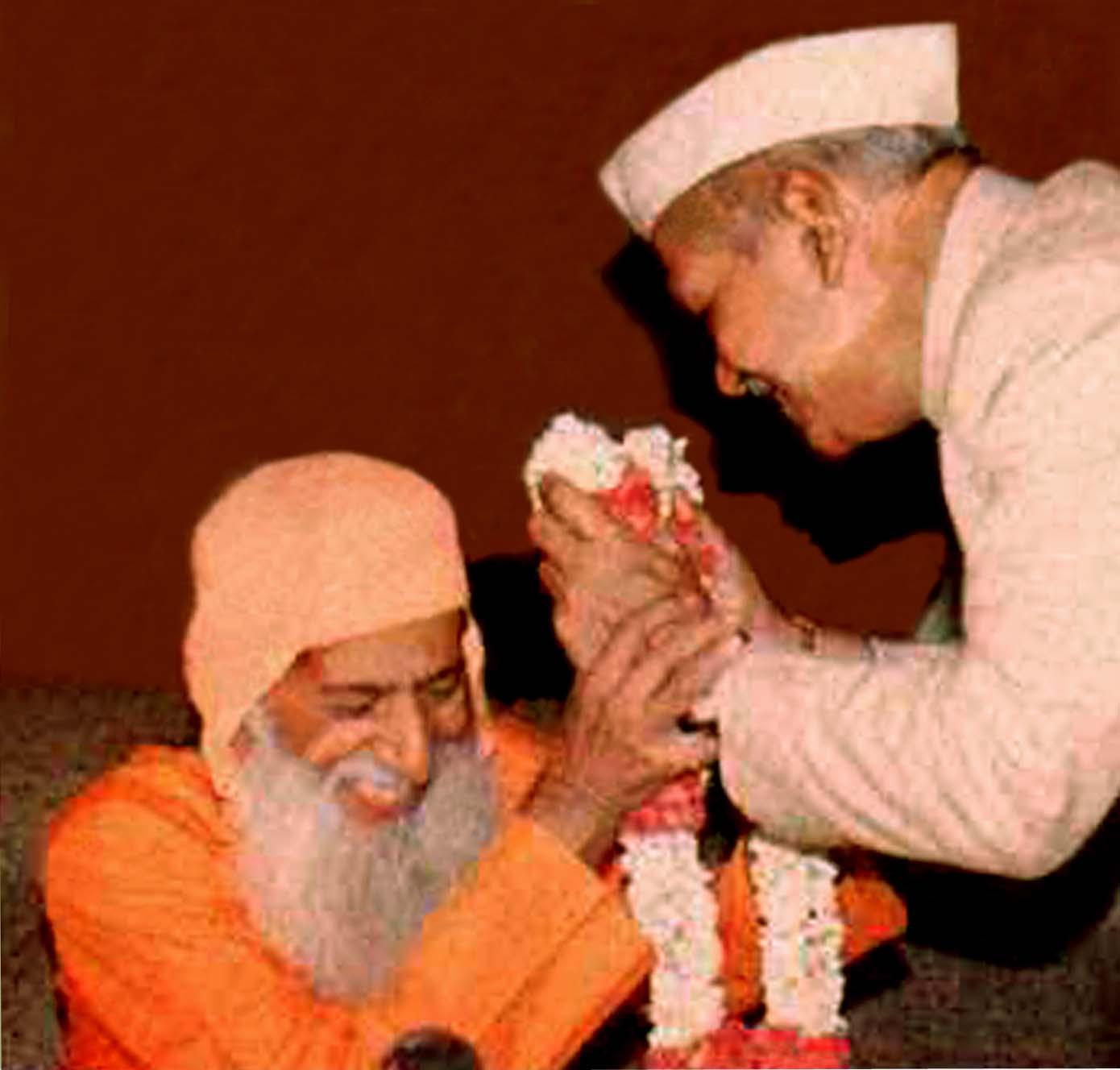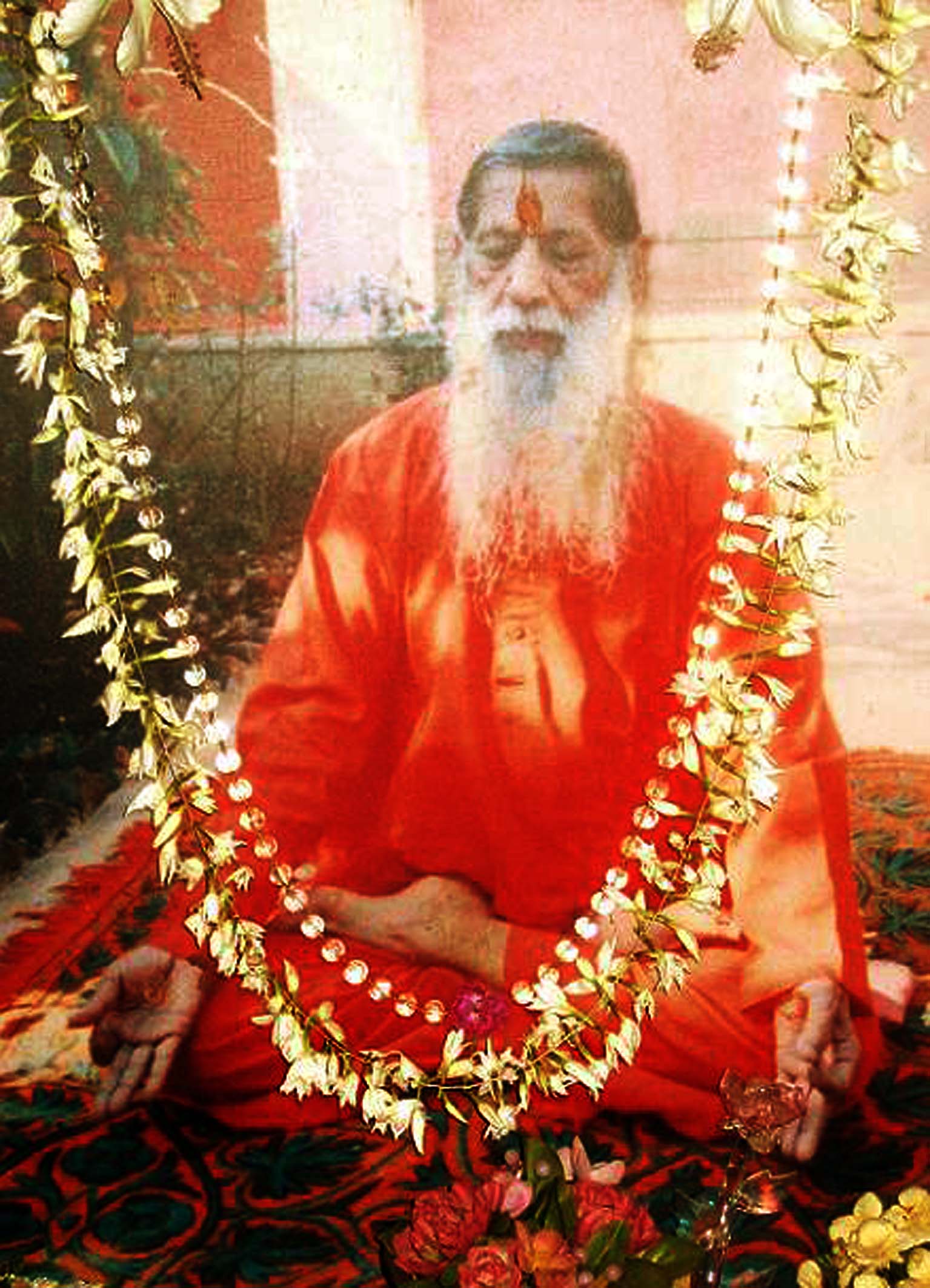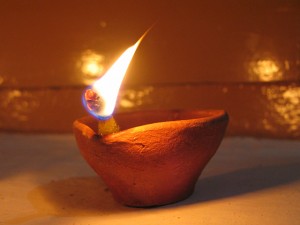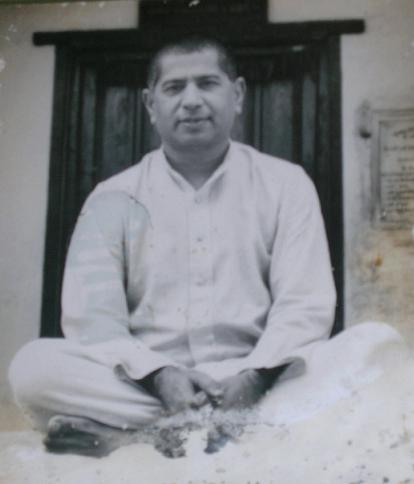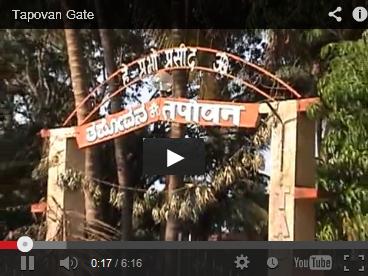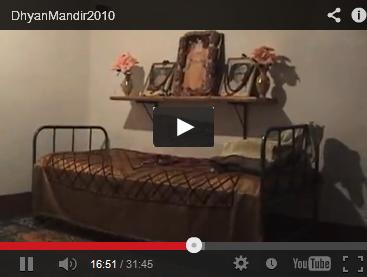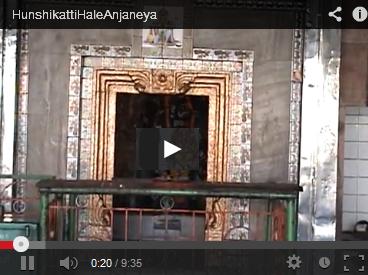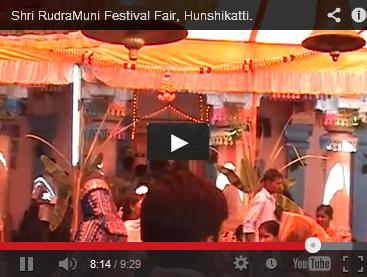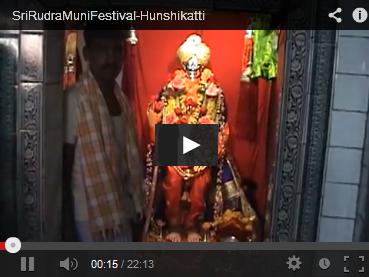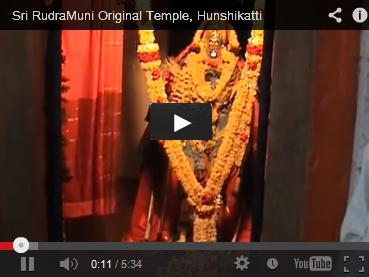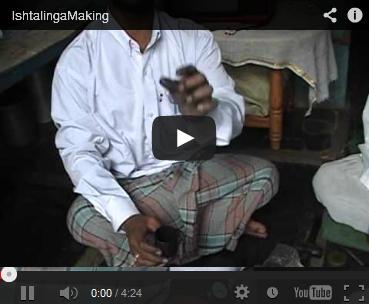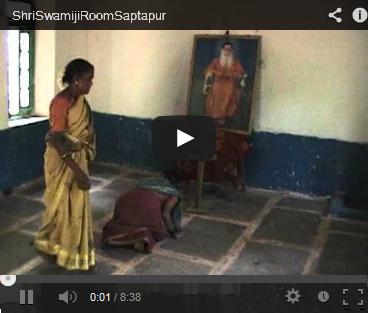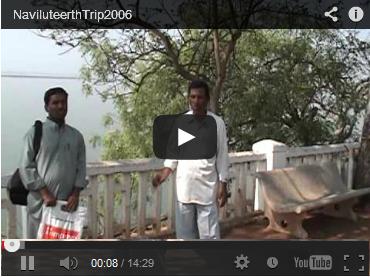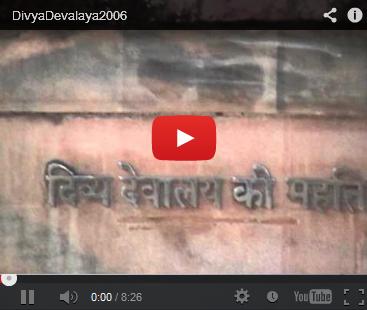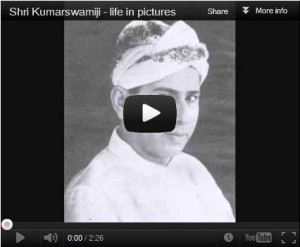What means this young and old?
in wisdom there is
No difference of age.
Timeless and time were not,
Myriads of microcosms and macrocosms
Had yet not dawned,
When you alone, as now I know,
were a great Seer,
In Guheshvaralinga:
That’s so, Channabasavanna.
This is Prabhudeva’s vachana on Channabasavanna. Channabasavanna’s life deserves careful study. Full justice cannot be done in depicting a personality of his calibre unless the picture is based on historical records. The Indian mind in the past put such emphasis on non-material values that it ignored to a great extent everything that was considered material. Earthly events did not count. People who were only waiting to go to their permanent abode neglected to record chronologically the events of their life here on earth.
In a country stricken with this curse, Karnatak was no exception. Hence it is almost impossible to give an authentic biography of any of the Shivasharanas. What records there are, are rhetorical and fanciful.
However, a modest attempt has been made here to give a biographical sketch of Channabasavanna, leaving out, as far as possible, what seem to be spurious elements.
Birth and Boyhood:
Channabasavanna was Basavanna’s nephew. This fact is supported in the vachanas:
1. “His nephew Channabasava for the ‘Prasadi Stage.”
2. “There is none for the ‘Prasadi Stage’ except his nephew.”
3. “Basava’s nephew for the Maheshvara Stage.”
Some poets also have expressed the same view. As an example, the Channabasava Purana and the ‘Sharana-Lilamrata’ may be quoted:
1. “After bidding farewell to the maternal uncle and the nephew…”
2. “Channabasava, Basava’s nephew.”
There are also some passages to show that Nagambika, Channabasavanna’s mother was Basavanna’s sister:
1. “So saying, Basava and his sister Nagambika…”
2. “Sister Nagambika, raising her brother, embracing and fondling him, says to Basava: frolic before me cheerfully.”
3. “As ever, when Basava’s sister came there.”
4. “With overflowing enthusiasm, then Basava to his sister Nagamma…”
5. “Of Basava’s elder sister, Nagambika…”
6. “Young Basava with his sister, Nagale…”
7. “To Basava, his sister, Nagalambika…”
There is simple evidence in Channabasavanna’s own vachanas to show that Nagambike was his mother:
l. You showed that Linga is Jangama
And Jangama is Linga, O true Guru, Basavanna,
And then you joined the Absolute:
You proved Prasada to be body, and
Body Prasada in all my limbs, and then,
Making me what I am, you went ahead.
Basava! Establishing within the heart
That Linga is Prana, and Prana Linga,
And making me like to you,
You vanished out of form, Basavanna,
In the great Linga!
Dissolving my mind in the Great Principle,
You disappeared, O Basavanna,
Made one with the Absolute;
When, feeding with the grace
That was bestowed and left,
And giving her a form, you lodged
Mother Nagayi in your heart,
My mind dissolved and swooned
Within your feet,
O Sangana Basavanna, that you may be
The carrier of the purest Light
To Kudala Channasangayya,
You have become the Impartite!
2. Unto the city extending wide
Twelve leagues, Kalyana was the saucer-lamp;
Therein the oil of Intellect was poured
And, as the flame of Knowledge was enkindled,
There was a blaze. There everyone,
With Kalayya, Choudayya, Kola Shantayya, Keshiraja
Of Mogavada, Khandeya Bommanna,
Minda Mallinatha, Hadapada Appanna,
Mad?valayya, Mother Nagayi
Made one with Sangana Basavanna’s end.
Therefore, in Lord Kudala Channasangama,
The end arrived for me
As a prasada of these all.
Thus, Channabasavanna himself has addressed Akkanagamma as his mother. It is no surprise, therefore, if others have confirmed it:
3. ‘The virtuous son of Nagalamba.’ 4. ‘Channabasava issued out of the womb of Nagalambe’. 5. ‘Channabasava was born of the young Nagalambike’. 6. He was born of Nagale, by the name of Channabasava.’
It is, thus, quite clear, from poetical works as well as vachanas, that Channabasavanna was the son of Nagalambike, Basavanna’s sister. That the name of his father is not mentioned in all these sources has surprised many. There is only one poetical work that mentions Channabasavanna’s father’s name, and that is ‘Singiraja Purana’. It was written around 1500 A. D. Poetical works written before and after it differ from this. According to them, Channabasavanna’s birth was miraculous. Their evidence may be thus classified:
1. Channabasava was born by Prasada.
2. He was born by Basava’s Prasada.
3. He was born by Kakkayya’s Prasada.
4. He was born by Shivaprasada.
All this evidence agrees that Channabasavanna was born, not through human intercourse, but miraculously. Is there any background for such a unanimous belief in a miraculous birth? In vachana literature we find that each Sharana is described as belonging to one of the ‘Six Stages’.
Basava, Madivalayya, Channabasavanna, Chandayya, Ghattivalayya and Ajaganna are said to belong to the Bhakta, Maheshvara, Prasadi, Pranalingi, Sharana and Aikya Stage respectively. Channabasavanna is described as belonging to the Prasadi Stage.
It should be remembered here that, though Channabasavanna belonged to the Prasadi Stage, nonetheless he achieved union with God, fox, according to the doctrine of the Six Stages, a soul can attain union with God at any Stage. Thus, for example, Basavanna, who was at the Bhakta Stage, Madivalayya at the Maheshvara Stage, Channabasavanna at the Prasadi Stage, alike attained that union. Channabasavanna was born with the gift of infused knowledge. Hence, many Shivasharanas have praised him as wise and spiritually enlightened:
l. “Self-born wise Channabasavanna.”
2. “You were found to be the only wise man, O Channabasavanna.”
3. “Salutation to the holy feet of Channabasavanna profoundly knows Guheshvara Linga.”
4. “In pure knowledge-accomplished devotion for the Channabasavanna, O Kapilasiddbamallikarjuna.”
5. “Sanganabasava’s action; Channabasava’s knowledge.”
6. “Basava is my holy action; Channabasava, my sacred knowledge.”
7. “For Basaveshvara all virtues mean character, for Chanabasava, divine knowledge is virtue.”
8: “The knowledge which enabled him to know himself and other than himself was attained by Channabasava.”
9. “My mundane existence was exterminated, O God, when I saluted the holy feet of Channabasava, the spiritually wise.”
10. “Channabasava’s knowledge.”
11. “Basava gained strength from devotion; Channabasava, from knowledge.”
From the above statements it appears that Channabasavanna was a true seer, and from the following illustration it will be clear that be was a born sage.
What means this young and old?
In wisdom there is
No difference of age.
Timeless and time were not,
Myriads of microcosms and macrocosms
Had yet not dawned,
When you alone, as now I know, were a great Seer,
In Guheshvaralinga:
That’s so, Channabasavanna.
Could you call Nambiynna a child?
Could you describe the sun that lights the world
As tiny? Could you say The eye that sees the Universe is small?
Could you regard the sense
As small, that turned a bushel into Linga?
And would you call Sharana
Transcending ages and aeons, small?
I salute to the feet of Channabasavanna,
O Lord Kudala Sangama?
Basava also seems to admit that his nephew was enlightened right from his birth:
Behold the stack of abundant growth That grew unsown, ungrown! How, at very birth, Its perfume is so like a ball of scent. Before beginning was or the Unbegun, Himself He was. So with no manner of touch, Channabasavanna, gaining the Guru’s grace, Himself became the Linga, that he might show me Both goal and way, assumed this form In Lord Kudala Sangama! Lord; that a baby born today Should just today have grown to youth! That baby now has taken its stand Upon the street, soliciting! But Lord Kudala Sangama alone can tell How happy the experience of their love!
From all this it become: clear that Channabasavanna was born of Prasada (grace) and that knowledge was instilled into him at birth. There is a difference between a physical body and a spiritual body. By following the path of devotion, a Sharana has to ascend from his gross body into a spiritual one. In order to achieve this end, a Sadhaka has to pass through different Stages-Bhakta, Maheshvara, Prasadi, etc. The signs of an enlightened soul begin to manifest only when the Sadhaka reaches the Prasadi Stage. Sharanas have recognised Channabasava as belonging to the Prasadi Stage because he was born enlightened. This type of enlightenment is proper only to the Prasadi Stage. The fact, as handed down by the Sharanas, therefore, is that Channabasavanna was enlightened from his birth and, therefore, belonged to the Prasadi Stage. Around this tradition many myths have grown. The chief among them are four as mentioned already, namely, his birth by Jangama Prasada, Basava’s Prasada, Kakkayya’s Prasada and finally Shivaprasada. Now let us consider each one of them briefly.
Birth by Jangama Prasada:
A reference has been made in the ‘Shivatatva Chintamani’ to Channabasava, which reads: “Basava daily worshipped Jangamas at Kalyana. One day, he was sent for, all of a sudden, by King Bijjala. He requested his sister Nagayi to take care of the holy Prasada of the Jangamas and went to the court. As Nagayi began to doze, a cat stole in to take away the Prasada. Basavanna, who was sitting in the court, saw this with his second sight and waved his hand. Nagayi woke up and ate the Prasada, and thus conceived Channabasava.” The essence of the story may be summed up as follows: Basava was engaged in serving the Jangamas at Kalyana. His sister Nagayi had always helped him in his holy ministry. She was accustomed to receive with great devotion the Jangamas Padodaka and Prasada. It may be said that the author of the book mentioned above has made use of these facts to build up a myth to make Channabasava into an extraordinary being.
Birth by Basava’s Prasada:
There is another story which says that Channabasavanna was born by Basava’s Prasada. In ‘Prabhulinga Lile’ we read:
“One day, in her extreme devotion, Sister Nagayi ate the great Prasada left by Basava. In a moment, it shaped itself into the very image of Shiva and grew. When a child was born, Nagayi named him after ‘Basava’.”
‘Prabhulingalile’ (1430 A. D.) was written immediately after ‘Shivatatva Cintamani’ (I425 A. D.). Within a period of five years, a new myth of Channabasava’s birth had originated. The story in ‘Shivatatva Cintamani’, which takes that Channabasava was born by Jangama Prasada in Basava’s palace, was altered in the ‘Prabhulingalile’ to his being born by Basava’s prasada. The similarity between the two names, ‘Basavanna’ and Channabasavanna, might have given rise to this new story. In support of this, Chamarasa says plainly that “Nagayi named the child after Basaveshvara.”
Birth by Kakkayya’s Prasada:
As time passed, the miracle took a different turn. ‘Sunyasampadane’ (1530 A. D.), edited by Halagedeva, Siddhananjesha’s ‘Gururaja Caritra’ (1672 A. D.) Shantalingadeshika’s ‘Bhairavesvara kavyada Knthamani Sutraratnakara’ (1680 A. D.), Adrshyakavi’s ‘Proudharayana Kavya’ (1680 A. D.) Channappakavi’s’ Sharana Lilamrta’ (1700 A. D.), in all these works it is mentioned that Channabasavanna was born by Kakkayya’s Prasada. This development is of a later origin, since the works which make mention of it are quite recent.
It is known from the vachanas and biographies of Shivasharanas that Kakkayya was a contemporary of Basava. He practised ‘dasoha’ and, seems, undertook the duty of distributing Prasada in Basava’s Mahamane (palace). A story regarding this in ‘Gururajacaritra’ runs as follows:
“One day, Bijjala sent his attendants to fetch Basava. As Basava was making his way through the crowd quickly, he was asked Kakkayya whether he would like to have prasada. He gladly agreed, and going a few steps ahead, dismissed those who had come to call him. When he went to receive prasada, he found that Kakkayya had closed the door and was moaning inside, saying, ‘Can any one go even a step further when asked to receive prasada?’ Basava repented, and had to wait twelve years at the door for the prasada, and at the end of this period, an ant brought his prasada from inside. Basava poured sugar, showed respect and received it from the ant…”
We can fully realise the greatness of Kakkayya’s prasada: Person like Basava had to wait for twelve years for it. The following vachana of Basavanna supports this story:
“Make me not bear the brunt, O Lord, Of being born in a superior caste: Behold! Kakkayya will not offer me His cast-off food.”
From what has been said so far we may conclude that two things seem to have deeply impressed the people, that:
l. Channabasavanna was born by Prasada and 2. Dohara Kakkayya’s praised was regarded by all the
Shivasharanas as most sacred.
The poets of the 16th and 17th centuries seem to have made use of the prevalent ideas, which are woven into the fabric of religious belief, in building up the myth of Channabasavanna’s birth. Thus, Kakkayya’s prasada, which was the most revered, was regarded as the cause of Channabasavanna’s birth.
Birth by Shiva Prasada:
In ‘Channabasava Purana’, Virupaksa Pandita says that Channabasava was born by Shiva-prasada. He has no belief in the other versions. According to him, Channabasava is the incarnation of the Supreme Consciousness; he is the Absolute Knowledge. It was his belief that only the bright ray of the Knowledge possessed by Shiva could manifest itself in this way. The poet’s imagination runs to the extent of believing that Channabasavanna is the manifestation of Shiva Himself. Thus, the poet contributed his share to the existing myths about Channabasava’s birth.
The Son of Shivasvami:
Among the pile of books that describe the birth of Channabasava, ‘Singiraja Purana’ is the most outstanding, as it contains the most acceptable version of the nativity of Channabasavanna. Most directly, and in the simplest language, it says that Shivasvami was Channabasava’s father.
Basavanna’s reply to his father, who was persuading him to return home from Kudalasangama, also bears witness to the fact that Shivadeva was the husband of Nagayi and father of Channabasavanna. Basavanna says to his father Mandageya Madarasa:
“Why do you talk of my return. No use of it now. Be happy to find me in pursuit of the highest. Paramartha and Kamartha go ill together. Moreover, I do not want to come to your vicious agrahara. Also my coming will bring more sorrow to you. When Basavanna bade ferewell to his father, telling him to shed all his affection, his father who was still full of affection for his son, returned home, leaving behind his son-in-law, Shivadeva and his daughter, Nagayi to attend on Basavanna.” We find in this purana some more evidences in support of the above statement as in the following lines:
“Channabasavanna, the walking fund of knowledge, Entering the place, with eager steps, Sealed fast the treasury, granary and all, And asked Gangambe and Nilalochane, the wives Of Basavesha, Sangama, their son And Shivasvami, Akkanagayi’s husband To take off their costly clothes and ornaments.
Thus, it is clear that the author of ‘Singiraja Purana’ had no doubt at all that Shivasvami was Channabasavanna’s father.
Which one of the many biographies is authentic? Is it ‘Singiraja Purana’, or any one of the poetical works which are full of miraculous events? Since the accounts of Channabava’s miraculous birth differ among themselves and are, besides, of a later origin, we consider them poetic fancies. What might be the reason for these miraculous accounts? Are they purely imaginary tales without any foundation? Some explanation may be offered.
l. On knowing Channabasavanna, anyone would see that he was an extraordinary personality. It is no surprise, therefore, if Channabasavanna appeared to be a miracle to the mythopolic eyes of people who viewed anything out of the ordinary as miraculous. 2. Poets like Lakkanna Dandesha and others, who have written the life of Channabasavanna, were more inclined towards mythology than biography. In order to depict the personality of Channabasavanna in an effective manner, they described the ordinary as extraordinary. 3. It is the common tendency of all religious sects to present most things as miraculous and mysterious. They thought that the more mysterious a religion, the higher it must be.
Most Christians believe that Jesus Christ, the founder of Christianity, was the son of Mary who was a virgin. Similarly, the Veerashaivas seem to have invented miraculous events, like ‘Basava descended as Nandi-avatara’. ‘Siddarameshvara was born to his mother whose menstrual process had completely stopped.’ There are many such stories about the lives of Shivasharanas. All of them aimed at creating a certain sense of awe and wonder. Unless their prophets and saints were extra?ordinary and superhuman, people would not follow them and form religious groups around them.
The stories, therefore, which describe Channabasavanna’s miraculous birth may be said to be inspired by this motive According to the records available, Channabasavanna came to this world by breaking through the belly of his mother. This can be a matter of pride, but can never be a matter of fact. In one place, Basavanna has said:
Unless the flow of blood appear, There is no harbourage Wherein the embryo may dwell. Is anybody in the world Delivered through the ear?
Here Basavanna asserts a universal truth. There is no doubt that the myths of Channabasavanna’s birth are the creation of preachers of the Shivasharanas’ teachings. They were connected for the more rapid dissemination of their doctrines among the masses.
“Singiraja Purana” is a work where we find historicity to a greater extent than in other books of a similar nature. Singiraja, the author of this work, had a historical sense, and did not believe too easily in any contemporary religious myth. He was foremost among those who desired that vachana literature should serve as the basis of the Sharanas’ biographies. Unlike, most, he would go to the original sources before he wrote anything. With his sharp critical sense, he would select only those materials which were relevant and about whose historicity there was certainty. That is why the Singiraja Purana has a predominant place among works which provide the data for the biographies of Basavanna and Channabasavanna. Modern scholars, like M. R. Shrinivasmurti and others, point out the biographical importance of this work. We, therefore, have to take Singiraja Purana as our most historical and reliable authority. If we do so, we have to accept that Channabasavanna was the son of Shivasvami and Nagayi.
A problem, however, remains unsolved, namely, the silence about Shivasvami in the works of the sharanas and poets, who were his contemporaries. If we read Singiraja Purana carefully, we find the reason. Shivadeva is described there as one ‘who is not free from the illusion of this worldly life’. Even though he was in the company of Sharanas, they did not pay much attention to him. Nagayi and Shivadeva seem to have married some time before Basavanna came to Kudalasangama, and there is no doubt at all about their marital relationship. The Sharanas, however, remember the names of Nagayi and Channabasavanna and praise them often, since they led a life which was an example to many.
Birth Place:
Channabasavanna was born at Kalyana. This is supported by many books. It is, however, learnt from inscriptions that Bijjala, after he became emperor, ruled at Kalyana from 1156 A. D. to 1167 A. D. When Basavanna came to Kalyana as Bijjala’s minister, he brought his sister with him. According to some scholars, Channabasavanna was born before Nagayi arrived at Kalyana. Had be been born after her arrival at Kalyana, Channabasavanna would have been too young to take an active part in the Kalyana revolution. However, others say that Basavanna lived in Kalyana for thirty-six years, and that the Kalyana revolution took place at the end of his stay there, when his nephew was already a young man. Hence, in all probability, he was born at Basavanna’s residence at Kalyana.
Guru’s Grace:
Basavanna was Channabasavanna’s Guru, as he initiated him while he was in his mother’s womb by placing a Linga upon her. Channabasavanna himself says:
When I was in the womb An infant of the Grace, Of what, in your Prasada Was offered and left over in excess, Who else but you saved me, Growing me with the ashes smear And by the contact of the head and hand?
Modest Basavanna did not agree to tie Linga when Channabasavanna prayed to him to do so according to the Veerashaiva rites. When Channabasavanna prayed to Basaveshvara saying:
“Kindly bless, O Guru, and protect the body Which your grace has given birth to”
Basavanna said:
Ho ho! What am I that should give
Instruction to any man?
The men who were saved of old
Themselves did save themselves,
And all of them are
One with the Reality.
Save ministering to them
Myself have nothing done,
That have held fast to truth.
O Channabasavanna,
Bear all the Immortals witness, Before Kudala Sangama,
It’s not for me to give
Grace that is rendered in words.
When Basavanna refused to bestow the Linga Channabasavanna exclaimed: ‘I am your child since time immemorial’ and, received his grace.
It is clear from this that Channabasavanna was born as Basaveshvara’s nephew, became his disciple after receiving grace from him, grew in the environment of the Sharanas, and finally had his self transformed into Linga.
At the Anubhava Mantapa:
Channabasavanna’s personality blossomed in the Anubhava Mantapa. Two things that moulded it are important, namely, that he was born in Basavanna’s place; and that he received the advantage of the Anubhava Mantapa. All agree about these two. In recent years, however, there has arisen a controversy as to the existence of the Anubhava Mantapa itself. They argue that no mention of the Anubhava Mantapa is made in Hariharadeva’s ‘Prabhudevara Ragale’. This argument presupposes that Harihara knew all the events that took place at Kalyana. Such a presupposition is unwarranted. From a historical point of view, the material that he could command was scanty. Secondly, being a poet, he had his own way of selecting and rendering things which need not be historical in the strict sense of the term. What was important to Harihara was the context of devotion. Historical facts were, often, of little importance to the poet. After the Kalyana revolution, the sharanas dispersed to orangal, Shrishaila and Ulive. Harihara lived at
Hampi, during the Hoysala empire, a place far away from the above centres. Hence, he might not have known all about the great Kalyana revolution. Secondly, the revolution being multidimensional, it had not been understood and interpreted fully in his time. Some information about certain leaders of this revolution might have reached him and stirred his poetic genius. Thus, the material gathered by Harihara is limited. Then, it would be rash to take him as the sole authority in order to question the existence of the Anubhava Mantapa. It is clear from Harihara’s ‘Basavarujadevara Ragale’ that the Shivasharanas, attracted by Basavanna’: holiness, were drawn from various corners of the country toward Kalyana and carried on discussions with him. Thus, Harihara, too, has referred indirectly to the Anubhava Mantapa.
Some scholars argue that the idea of the Anubhava Mantapa came into being only in the 15th century. But in Bh?makavi’s ‘Basava Purana’, written earlier than the Veerashaiva renaissance during the Vijayanagar empire, we come across many a time such term: as ‘Tatvagosthi’ (discourses), ‘Oddolaga’ (Great Assembly) etc. akin to the Anubhava Mantapa. We find references in such passages to devotees in Kudala Sangamesha’s ‘Bhavana Mantapa.’ It is obvious that this refers to the Anubhava Mantapa. The description of the Anubhava Mantapa points to Basavanna and other Pramathas of the 12th century. In the works belonging to the 15th century also, we find clear descriptions of the ‘Anubhava Mantapa.’ We may, for example, quote the description of ‘Anubhava Mantapa’ from Prabhudevara Purana.
Basavaraja built the Anubhava Mantapa
With floor of seven billion mantras,
Thirtysix very beautiful pillars of praise,
With matching thirtysix images of Shakti
And thirtysix beam: of devotion in one order,
With hundred and one ceiling planks of the Sthala,
And mortar of minor bumming mantras
Echoing thirtysix auspicious names.
He further established the Shunyasimhasana in the Anubhava Mantapa. The term ‘Mahamantapa’ is used in the ‘Singiraja Purana’ and in Prabhudevara Purana.
In ‘Channabasava Purana’ also, it is said that the Anubhava Mantapa was in Basava’s residence. To support this, there is a vachana in the name of Hadapada Rechanna. In this vachana, all the Mantapas like the Anubhava Mantapa, Merumantapa, Charamantapa, Vishhalamantapa, Paramanandaprakasha Mantapa, Prasadamantapa, aradhyamantapa, Chenganagilamantapa that existed at Kalyana, are mentioned. Several Sharanas are described in relation to certain Mantapas. Channabasavanna is mentioned as being closely connected with the Anubhava Mantapa.
To crown all this, we have found a vachana by Nilamma in our research which supports our point. No one can question its validity, since the vachana is found in our several palm leaf manuscripts. It reads as follows:
‘Our Basava, having found Channabasava a Prasadi,
Started the Anubhava Mantapa, and became Mysticism incarnate;
He attained Realization, practised the principles,
Made the seven hundred seventy Amaraganas
Embody the mystic experience….”
When such strong evidence is available, to deny the existence of the Anubhava Mantapa would be to defy the truth itself. The Anubhava Mantapa was the manifestation of the sublime vision of Basavanna, the centre for propagation of ideas regarding the new society, religion and philosophy.
Channabasavanna played a very important role in the activities of the Anubhava Mantapa. There are some who hold that he received the Linga in this Mantapa. If this is true, it, indeed, played a great part in Channabasavanna’s spiritual growth.
Channabasavanna is mentioned in all the important activities of the Anubhava Mantapa. When Prabhudeva becomes angry with Basavanna who does not receive him at his house while he (Basavanna) was engrossed in the Ishtalinga worship; the test of Mahadeviyakka, Nuliya Chandayya’s abandoning of the Linga in his work; the initiation of Siddharameshvara-in all these events Channabasavanna’s personality and his ability unmistakably stand out. When Channabasavanna exhibited these extraordinary abilities, he was still young. As a boy of twelve, he bestowed the Linga on Mahayogi Siddharameshvara to initiate him in to the fold. This incident, unique in the history of Veerashaivism, indicates the significance of Channabasavanna’s role in building up a spiritual academy that the Anubhava Mantapa was.
On the Shunya Simhasana
We have already seen that the Anubhava Mantapa was established at Kalyana by Basavanna. Prabhudeva was its first president. Though be occupied such an exalted position, he was constantly on the move for the service of the people. But the presence of the President of Anubhava Mantapa was constantly required during its multifarious activities. Hence, the Pramathas might have felt the need to elect another man. The choice naturally fell on Channabasavanna, who thus became the second occupant of the Shunya Simhasana. The reinterpretation and the establishment of Satsthala philosophy were the main objectives of the Anubhava Mantapa. Channabasavanna’s contribution towards this was very significant. This fact is well supported by vachanas as well as by the several titles he bore.
In a palm-leaf manuscript of the ‘Sakila Vachana’ we read The Sakila Vachana which is addressed to all the Shivagamas by His Holiness Channabasaveshvara from the throne of the Anubhava Mantapa at Kalyana…” This Sakila Vachana contains a re-interpretation of the Sat-sthala. Because of this interpretation, Channabasavanna earned various titles, such as ‘Shadusthala Murti’, ‘Shadusthala Brahmi’, ‘Sadhvidhasthapanacharya.’ Thanks to this high position, Channabasavanna could preach the doctrine of Pranalinga to Basavanna himself, the founder of the Anubhava Mantapa. While Basavanna’s magnetic personality attracted multitudes of people to Kalyana, Channabasavanna provided all the facilities for their spiritual needs. He organised discussions and councils. The burden of the revolution of Sharanas was now on his shoulders.
Some politicians saw a real danger in Channabasavanna and promptly complained to the King. In the Channabasava Purana we come across a classic example of such complaints:
“Look, I suspect the motives
Of Basavanna in making Channabasavanna
the President of Anubhava Mantapa
I am afraid, he might cause a great danger to you
By taking the reins of administration
of the entire country.
Since all the people are forced to join him,
All elephants and horses parade their pride,
It augers ill fur your Lordship,
Complained Kondheya Manchanna.”
This complaint is suggestive of the pomp and glory which the Veerashaiva organisation had attained at that time.
As Chikkadannayaka:
Channabasava, besides being the president of the Anubhava Mantapa, was also a Chikkadannayaka, that is, Junior Commander-in-Chief of the army whose Commander-in-Chief was Basavanna. King Bijjala used to consult both of them in important matters. He knew the court life so well that he has made many a reference to it in various contexts:
1. As one who is lowborn assumes the royal name, He is fit for the name only, not the crown. 2. The joy that is born in the union with Lord Kudala Channasanga is like that When the Queen
bestows her grace.
3. A monarch’s piety is lost through love of self.
4. King’s devotion is lost in such words of command ‘stop’ ‘give up’.
5. As the regal power does not come to the nameless man with the King’s name.
6. For the princess who sees, there is exceeding care.
7. Lo, all who are rich in wealth, receive
The attention of the king. 8. Kings honour the Jangama who has the sixteen qualities; And harlots honour the Jangama who’s passionate.
9. What if a Kshatriya be a devotee, Unless he leaves anger and violence?
10. What if a king be a devotee, Unless he renounces his pride?
11. Does a Bhakta threaten, Like a gilded tyrant?
12. Can a mahout mounted on an elephant Became an emperor?
13. What if a monarch be a Devotee? He looks with no inquiring eyes!
14. Oh, people should not mount An elephant before the minister.
15. When a king is at home, Would it be an offering if you Brought presents to the door And said you offered them?
16. He who, misinterpreting king’s words, makes Yes mean No and No mean Yes is a tricked fool.
17. Kings, craving flesh, have eaten for Dogs’ leavings and gone down to hell.
18. The mere practice of the eightfold worship
And the sixteenfold service of God is as useless.
As the unrecognised service to the King.
19. When the kingdom which is ruled by a king has limits
such as village, town and city, bow can it be limitless?
20. It is like a king of touchstone ruling over a people of iron.
Surprisingly enough, history is silent as regards Channabasavanna’s life as Chikkadannayaka.
The Revolt:
In the introductory chapter we made mention of the many-sided revolt of the Sharanas by Basavanna and his compeers. These men began to question everything that was traditional and opened many a window through which fresh air could blow. They led no monastic life, but preached doctrines, spiritual and social. They worked assiduously for a casteless society. They fought for both religious and social equality. ‘The soul, they said, is neither male nor female. The difference is only accidental. All are human and, therefore, fundamentally equal. This was the philosophy behind this revolution. Madara Channayya, Dohara Kakkayya, Ambigara Chaudayya, Medara Ketayya, Hadapada Appanna and a host of people who were despised as low-caste, received high standing in this vigorous new society. While these social changes increased the animosity of the pharisaical traditionalists, they opened the eyes of several sincere souls who wanted to see. The multitudes saw in Basavanna a saviour.
Day by day, the small fold began to grow. This growth only earned the jealousy of the blind followers of tradition. They reported about this missionary band to the King time and again, as they were afraid of doing anything by themselves. As a result, relations between Bijjala and Basavanna became strained.
The King’s behaviour was not surprising, for his mind was poisoned. He began to persecute the leaders of the new movement. The eyes of Haralayya and Madhuvayya were ordered to be plucked out because the former’s son, a low-caste, had married the daughter of the latter, a Brahmin.
As the persecution gathered strength, the Shivasharanas began to think seriously about their future. Two ways were open to them: either to get away from the place where such censure of Shiva was being done, or to fight it out. Opinions were divided as to the course they should follow. Basavanna had already left Kalyana for Kudalasangama. Hatred for Shivasharanas was manifested through severe persecution. Some people had been waiting for a long time to take revenge on Bijjala for his treacherous usurpation of the Chalukya throne. Their wishes were realised when Jagadeva, a feudatory, murdered ` the King with the help of Mallibommayya.
The King’s party spread the rumour that the King’s death had been instigated by the Shivasharanas. The mention made in some of the texts in this behalf is spurious. In “Basavarajdevara Ragale” we read:
“Thus Basava, becoming influential on the earth, Instigated the death of Bijjala, the enemy of Shiva.”
The work contained twenty-five sthalas, or chapters, as we know from other evidence. Half of the book is lost. It ends with the incomplete thirteenth chapter. In some copies we find thirty lines more, starting from the lines quoted above. The style of these lines differs ; hence they cannot have been the work of the same poet, but must have been added by someone, with what motives we cannot say. Also, the authors of such later , Veerashaiva works like Sunyasampadane have tried to associate the Shivasharanas with it. The later Jaina works ascribe the whole thing to Basavanna.
The assassination of the King brought about a serious disturbance in the political and social life of Kalyana. There was no more hope of survival for the Sharanas there. Hence, they were forced to leave Kalyana and disperse to various places. Channabasavanna led a large group of Sharanas to Ulive. The exodus of the Sharanas was most pathetic. Nobody was willing to help them for fear of the King’s army.
The route followed by the Shivasharanas to Ulive is recorded differently by different authors. Channabasava Purana locates the places where the Sharanas fought with the party of the King, as follows:
Kalyana Toragallu Tadagoda Kataravalli Muragoda Ulive
At Muragoda, Madivala Machayya and Kugina Maritande captured Sindabijjala, Bijjala’s nephew. The timely intervention of Nagambike, Basavanna’s sister saved the prisoner’s life. In Sharanalilamrta, the route is described in the following way:
Kalyana
Tadagoda
Muragoda
Kugubasava
Godachi
Ulive Mahamane
In a vachana said to be written by Rechanna, the route is marked thus:
Kalyana
Kataravalli
Muragoda
Ulive
Kalajnana Vachanas give more details. The Sharanas, according to it, left Madivalayya in a small ant-hill under a tree at Godachi. At Sattigeri they took a kalasa (lamp) and at Kadakola they worshipped Shiva. As they reached Modalur, a fight broke out. Talavur is the place where they seem to have beheaded some one. When they approached Mugabasava, they struck a gong. Kadaravalli was the place which witnessed a strong fight. Some Sharanas died at Sambrani. As soon as the marching crowd approached Melugaiyallapura, Kugina Marayya gave a shout of joy, crossed the Black Stream and entered Ulive.
Happily, there are many remnants which support the details mentioned above. The statue at Godachi, which is honoured as that of old Virabhadra, is undoubtedly that of a Sharana. As the statue holds an Ishtalinga, cymbals and beads, it seems to be the statue of Madivala Machideva. At Muragoda, they have preserved the gate of Ulive. There is a tradition that the Sharanas hid their arms at Kengeri. The shrine at Nagalapura is believed to be that of Nagambika. Kadaravalli is full of war memories. The near by Hunasikatti has the shrine of Rudramunishvara. The mound and the temple at Turamari remind the visitor of the camping of Channabasaveshvara. The Doddabasavanna of Nandihalli may be the monument of Sharanas. It is said that, at Kakkeri, Kakkayya slept in the Lord. The Channabasaveshvara temple at Dharwar is another memorial of a Sharana camp. Jagallabetta, Kinnaribrahmayyana Whole these names show some relation with the exodus of the Sharanas. With the help of these details we may chalk out the route of the exodus in the following manner:
Kalyana
Toragal
Tadegoda
Godachi
Sattigeri
Modalura
Muragoda
Mugabasava
Nagalapura
Turamari
Hunasikatte
Kadaravalli
Kakkeri
Kittura
Dharwar
Sattura
Sambrani
Melugaiyallapura
Jagalabetta
Kinnaribrahmayyanahole
Ulive
(Mahamane)
However, from this it should not be concluded that all the Sharanas followed the route strictly as described above. There is no proof to show that all the Sharanas moved as a single group. But one thing is certain that this route was, more or less, followed by some groups of Sharanas.
If the above hypothesis is admitted, we may depict the route of Channabasava in the following manner:
Kalyana Torogal Kadakola Medalur Muragoda Mugabasava Nagalapur Hunasikatte Kadaravalli
Kakkeri Nandihalli Linganamatha Kittur Jangamahatti Dharwada Jagalabetta Sattur Sambrani
Melugaiyallapura Ulive
Ulive was then ruled by the Kadambas, who were feudals of the Chalukyas. Though the former declared independence it was not recognised by the latter. Hence, even Ulive was not a safe place for the Sharanas. They were pursued up to the Mahamane. Channabasava must have prepared a few men to continue his teachings before he left this world.
From the considerations made so far, the part played by Channabasavanna in the socio-religious movement of the Sharanas is very clear. But his life-span has become a problem.
Kalanjana Vachana gives the date of Channabasavanna’s birth. It is, in terms of the Christian calendar, 1143 A. D. The tradition says that Channabasavanna was born twelve years after Basavanna’s arrival at Kalyana, in 1131 A. D. It is said that Channabasavanna lived only 24 years, which means he died in 1167 A. D. The Pancanga calculations, however, show a difference of twenty-eight years as regards the date of his death, which I think, calls for further research.
This information on – ‘Sri Chennabasaveshvar’ – is collected from ‘various sources on internet, books, magazines’ and also from
[1] Dr. R. G. Hiremath, M. A., Phd. Vice-Chancellor, “SHRI CHANNABASAVESHVARA, Life and Philosophy”, 1978, Karnatak University, Dharwad
